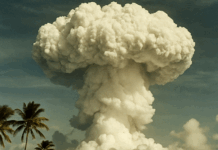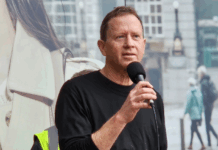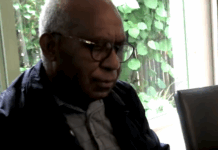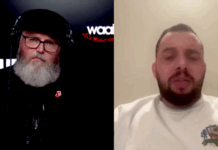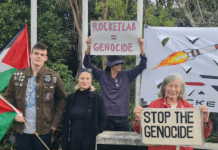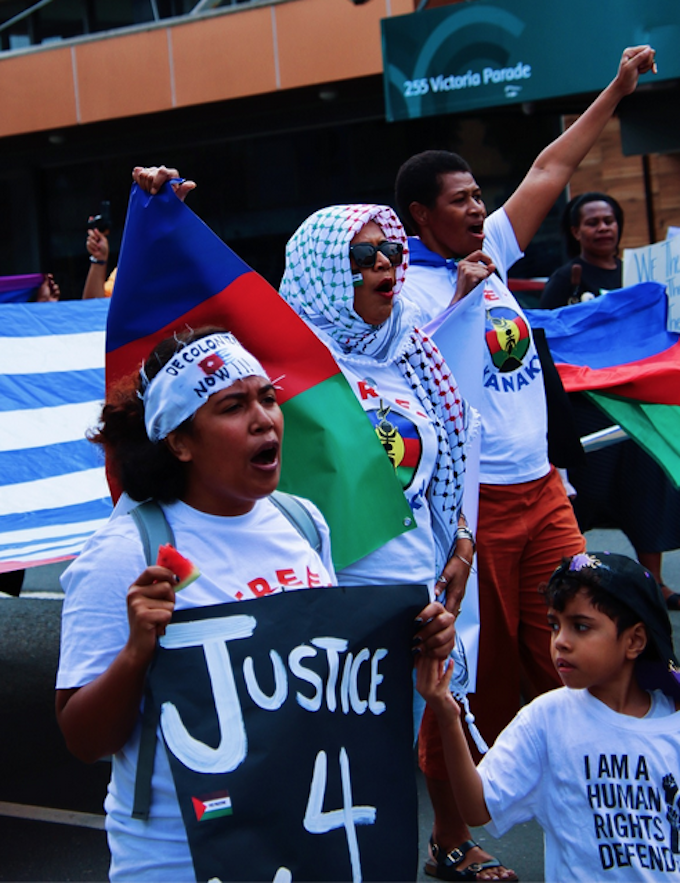
Many platitudes about media freedom and democracy laced last week’s Pacific International Media Conference in the Fijian capital of Suva. There was a mood of euphoria at the impressive event, especially from politicians who talked about journalism being the “oxygen of democracy”.
The dumping of the draconian and widely hated Fiji Media Industry Development Act that had started life as a military decree in 2010, four years after former military commander Voreqe Bainimarama seized power, and was then enacted in the first post-coup elections in 2014, was seen as having restored media freedom for the first time in almost two decades.
As a result, Fiji had bounced back 45 places to 44th on this year’s Reporters Without Borders World Press Freedom Index – by far the biggest climb of any nation in Oceania, where most countries, including Australia and New Zealand, have been sliding downhill.
- READ MORE: Fiji protesters call for freedom and justice in the Pacific – and Palestine
- Other Pacific Media Conference reports
One of Fiji’s three deputy Prime Ministers, Professor Biman Prasad, a former University of the South Pacific economist and long a champion of academic and media freedom, told the conference the new Coalition government headed by the original 1987 coup leader Sitiveni Rabuka had reintroduced media self-regulation and “we can actually feel the freedom everywhere, including in Parliament”.
The same theme had been offered at the conference opening ceremony by another deputy PM, Manoa Kamikamica, who declared:
“We pride ourselves on a government that tries to listen, and hopefully we can try and chart a way forward in terms of media freedom and journalism in the Pacific, and most importantly, Fiji.
“They say that journalism is the oxygen of democracy, and that could be no truer than in the case of Fiji.”
Happy over media law repeal
Papua New Guinea’s Minister for Information and Communication Technology Timothy Masiu echoed the theme. Speaking at the conference launch of a new book, Waves of Change: Media, Peace, and Development in the Pacific (co-edited by Professor Prasad, conference chair Associate Professor Shailendra Singh and Dr Amit Sarwal), he said: “We support and are happy with this government of Fiji for repealing the media laws that went against media freedom in Fiji in the recent past.”

But therein lies an irony. While Masiu supports the repeal of a dictatorial media law in Fiji, he is a at the centre of controversy back home over a draft media law (now in its fifth version) that he is spearheading that many believe will severely curtail the traditional PNG media freedom guaranteed under the constitution.
He defends his policies, saying that in PNG, “given our very diverse society with over 1000 tribes and over 800 languages and huge geography, correct and factful information is also very, very critical.”
Masiu says that what drives him is a “pertinent question”:
“How is the media being developed and used as a tool to protect and preserve our Pacific identity?”

Another issue over the conference was the hypocrisy over debating media freedom in downtown Suva while a few streets away Fijian freedom of speech advocates and political activists were being gagged about speaking out on critical decolonisation and human rights issues such as Kanaky, Palestine and West Papua freedom.
In the front garden of the Gordon Street compound of the Fiji Women’s Crisis Centre (FWCC), the independence flags of Kanaky, Palestine and West Papua flutter in the breeze. Placards and signs daub the walls of the centre declaring messages such as “Stop the genocide”, “Resistance is justified! When people are occupied!”, “Free Kanaky – Justice for Kanaky”, “Ceasefire, stop genocide”, “Palestine is a moral litmus test for the world” and “We need rainbows not Rambos”.
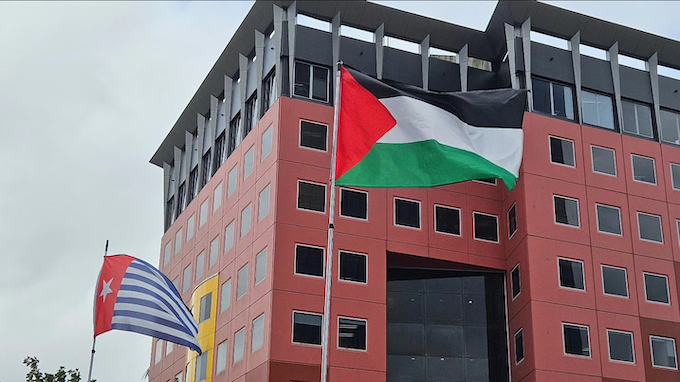
‘Thursdays in Black’
While most of the 100 conference participants from 11 countries were gathered at the venue to launch the peace journalism book Waves of Change and the 30th anniversary edition of Pacific Journalism Review, about 30 activists were gathered at the same time on July 4 in the centre’s carpark for their weekly “Thursdays in Black” protest.
But they were barred from stepping onto the footpath in public or risk arrest. Freedom of speech and freedom of assembly Fiji-style.

Surprisingly, the protest organisers were informed on the same day that they could stage a “pre-Bastllle Day” protest about Kanaky and West Papua on July 12, but were banned from raising Israeli’s genocidal war on Palestine.
Fiji Solidarity March for Kanaky and West Papua in Suva this morning pic.twitter.com/aEI223iZ8g
— Fiji One News (@FijiOneNews) July 12, 2024
Fiji is the only Pacific country to seek an intervention in support of Tel Aviv in South Africa’s case before the International Court of Justice (ICJ) at The Hague accusing Israel of genocide in a war believed to have killed more than 38,000 Palestinians — including 17,000 children — so far, although an article in The Lancet medical journal argues that the real death toll is more like 138,000 people – equivalent to almost a fifth of Fiji’s population.
The protest march was staged on Friday but in spite of the Palestine ban some placards surfaced and also Palestinian symbols of resistance such as keffiyehs and watermelons.
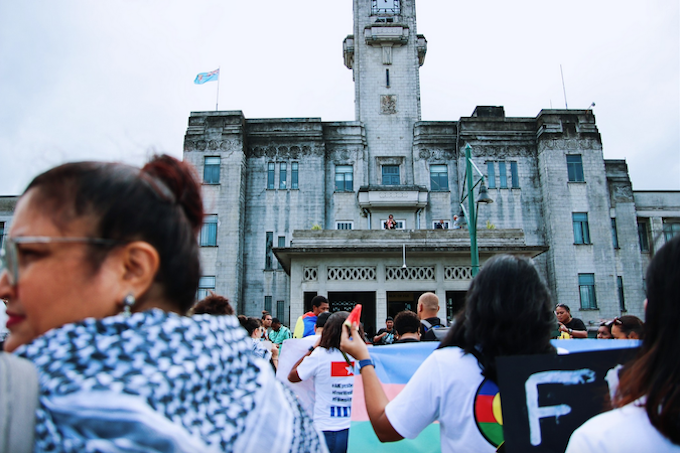
The Fiji NGO Coalition on Human Rights in Fiji and their allies have been hosting vigils at FWCC compound for Palestine, West Papua and Kanaky every Thursday over the last eight months, calling on the Fiji government and Pacific leaders to support the ceasefire in Gaza, and protect the rights of Palestinians, West Papuans and Kanaks.
“The struggles of Palestinians are no different to West Papua, Kanaky New Caledonia — these are struggles of self-determination, and their human rights must be upheld,” said FWCC coordinator and the NGO coalition chair Shamima Ali.

Media silence noticed
Outside the conference, Pacific commentators also noticed the media hypocrisy and the extraordinary silence.
Canberra-based West Papuan diplomacy-trained activist and musician Ronny Kareni complained in a post on X, formerly Twitter: “While media personnel, journos and academia in journalism gathered [in Suva] to talk about media freedom, media network and media as the oxygen of democracy etc., why Papuan journos can’t attend, yet Indon[esian] ambassador to Fiji @SimamoraDupito can??? Just curious.”
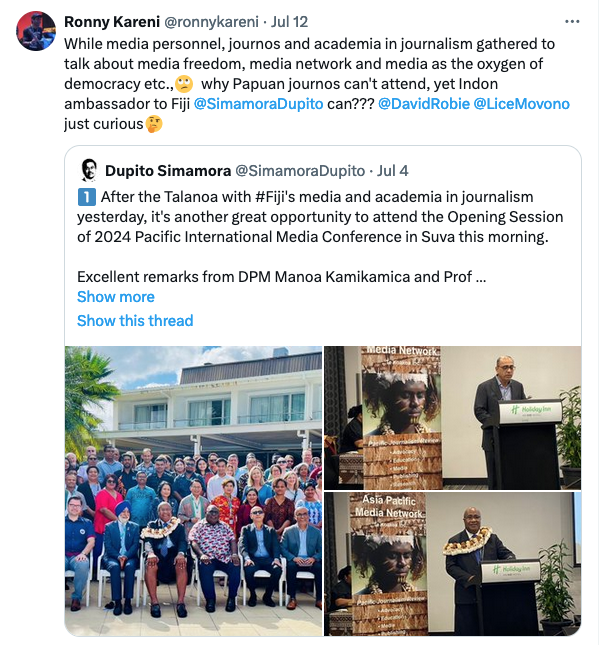
At the conference itself, some speakers did raise the Palestine and decolonisation issue, including Indonesian rule in Melanesian West Papua.
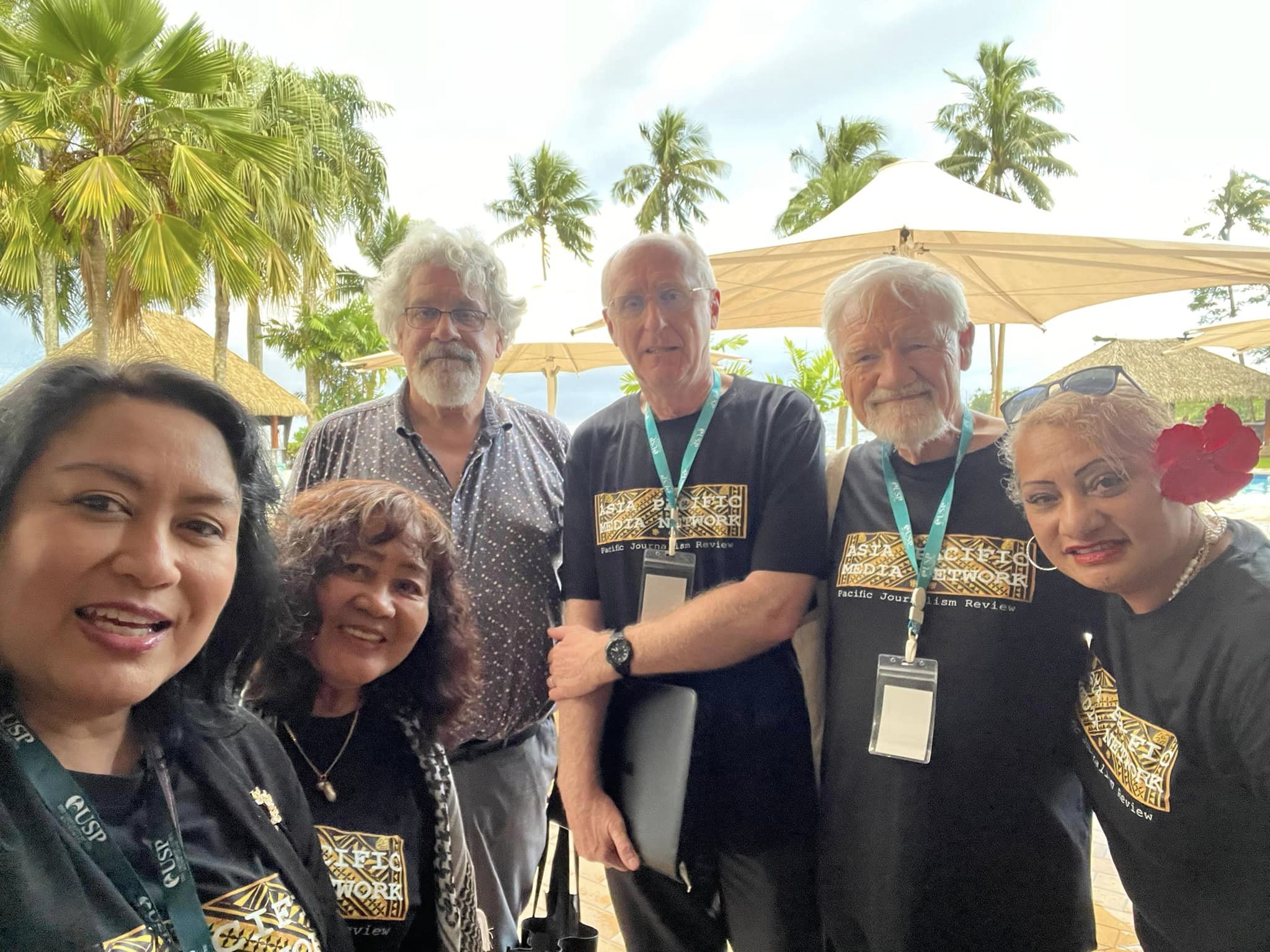
Khairiah A. Rahman, of the Asia Pacific Media Network, one of the partner organisers along with the host University of the South Pacific and Pacific Islands News Association, spoke on the “Media, Community, Social Cohesion and Conflict Prevention” panel following Hong Kong Professor Cherian George’s compelling keynote address about “Cracks in the Mirror: When Media Representations Sharpen Social Divisions”.
She raised the Palestine crisis as a critical global issue and also a media challenge.

In his keynote address, “Frontline Media Faultlines: How Critical Journalism Can Survive Against the Odds”, Professor David Robie, also of APMN, spoke of the common decolonisation threads between Kanaky, Palestine and West Papua.
He also critiquing declining trust in mainstream media – that left some “feeling anxious and powerless” — and how they were being fragmented by independent start-ups that were perceived by many people as addressing universal truths such as the genocide in Palestine.
PJR editorial challenge
Dr Robie cited the editorial in the just-published Pacific Journalism Review which had laid down a media challenge over Gaza. He wrote:
“Gaza has become not just a metaphor for a terrible state of dystopia in parts of the world, it has also become an existential test for journalists – do we stand up for peace and justice and the right of people to survive under the threat of ethnic cleansing and against genocide, or do we do nothing and remain silent in the face of genocide being carried out with impunity in front of our very eyes?
“The answer is simple surely . . .
“And it is about saving journalism, our credibility, and our humanity as journalists.”
Professor David Robie’s keynote speech at Pacific Media 2023. Video: The Australia Today

At the end of his address, Dr Robie called for a minute’s silence in a tribute to the 158 Palestinian journalists who had been killed so far in the ninth-month war on Gaza. The Gazan journalists were awarded this year’s UNESCO Guillermo Cano Media Freedom Prize for their “courage and commitment to freedom of expression”.
Undoubtedly the two most popular panels in the conference were the “Pacific Editors’ Forum” when eight editors from around the region “spoke their minds”, and a panel on sexual harassment on the media workplace and on the job.
Little or no action
According to speakers in “Gender and Media in the Pacific: Examining violence that women Face” panel introduced and moderated by Fiji Women’s Rights Movement (FWRM) executive director Nalini Singh, female journalists continue to experience inequalities and harassment in their workplaces and on assignment — with little or no action taken against their perpetrators.

The speakers included FWRM programme director Laisa Bulatale, experienced Pacific journalists Lice Movono and Georgina Kekea, strategic communications specialist Jacqui Berell and USP’s Dr Shailendra Singh, associate professor and the conference chair.
“As 18 and 19 year old (journalists), what we experienced 25 years ago in the industry is still the same situation — and maybe even worse now for young female journalists,” Movono said.
She shared “unfortunate and horrifying” accounts of experiences of sexual harassment by local journalists and the lack of space to discuss these issues.
These accounts included online bullying coupled with threats against journalists and their loved ones and families. stalking of female journalists, always being told to “suck it up” by bosses and other colleagues, the fear and stigma of reporting sexual harassment experiences, feeling as if no one would listen or care, the lack of capacity/urgency to provide psychological social support and many more examples.
“They do the work and they go home, but they take home with them, trauma,” Movono said.
And Kekea added: “Women journalists hardly engage in spaces to have their issues heard, they are often always called upon to take pictures and ‘cover’.”
Technology harassment
Berell talked about Technology Facilitated Gender Based Violence (TFGBV) — a grab bag term to cover the many forms of harassment of women through online violence and bullying.
The FWRM also shared statistics on the combined research with USP’s School of Journalism on the “Prevalence and Impact of Sexual Harassment on Female Journalists” and data on sexual harassment in the workplace undertaken by the team.
Speaking from the floor, New Zealand Pacific investigative television journalist Indira Stewart also rounded off the panel with some shocking examples from Aotearoa New Zealand.
In spite of the criticisms over hypocrisy and silence over global media freedom and decolonisation challenges, participants generally concluded this was the best Pacific media conference in many years.



